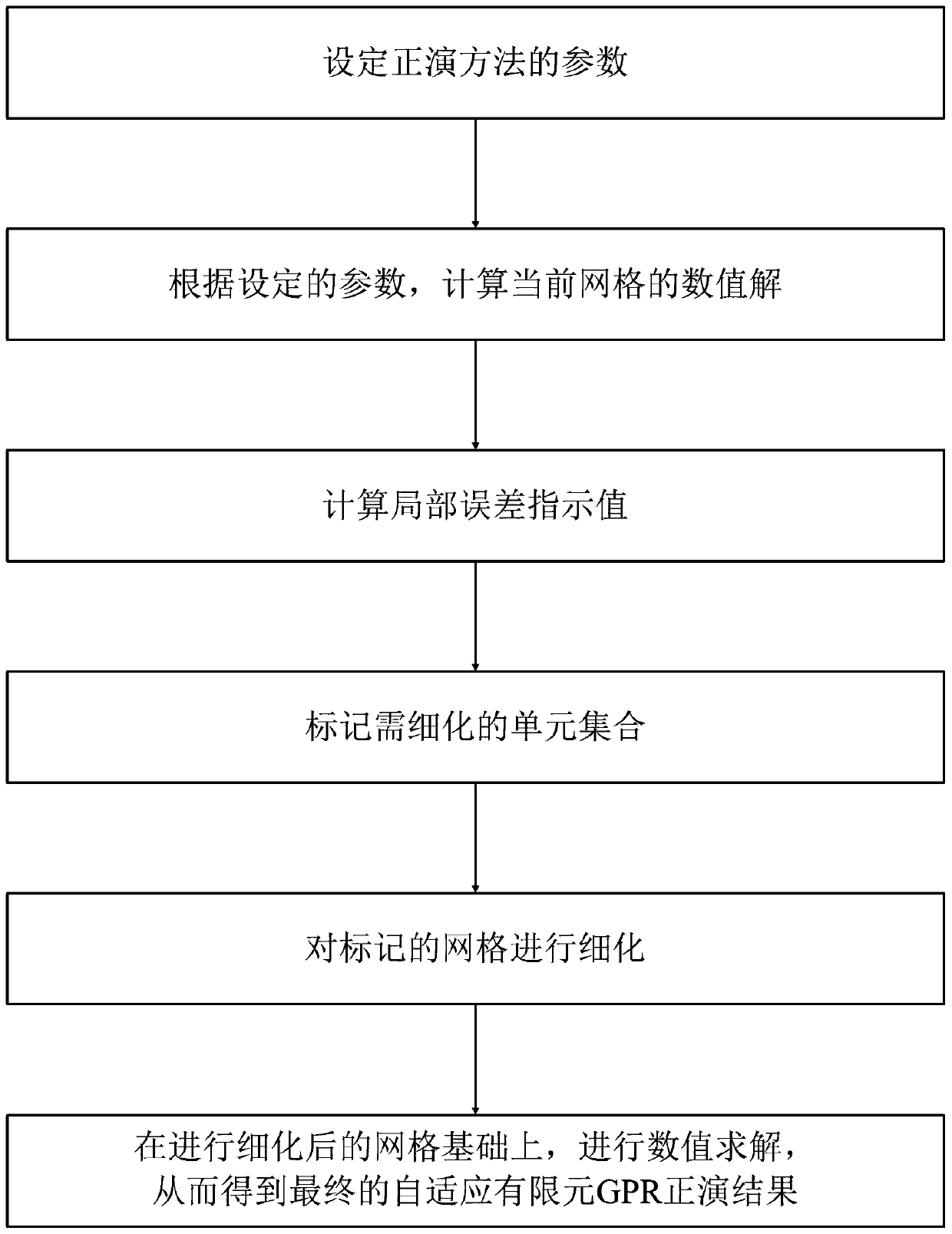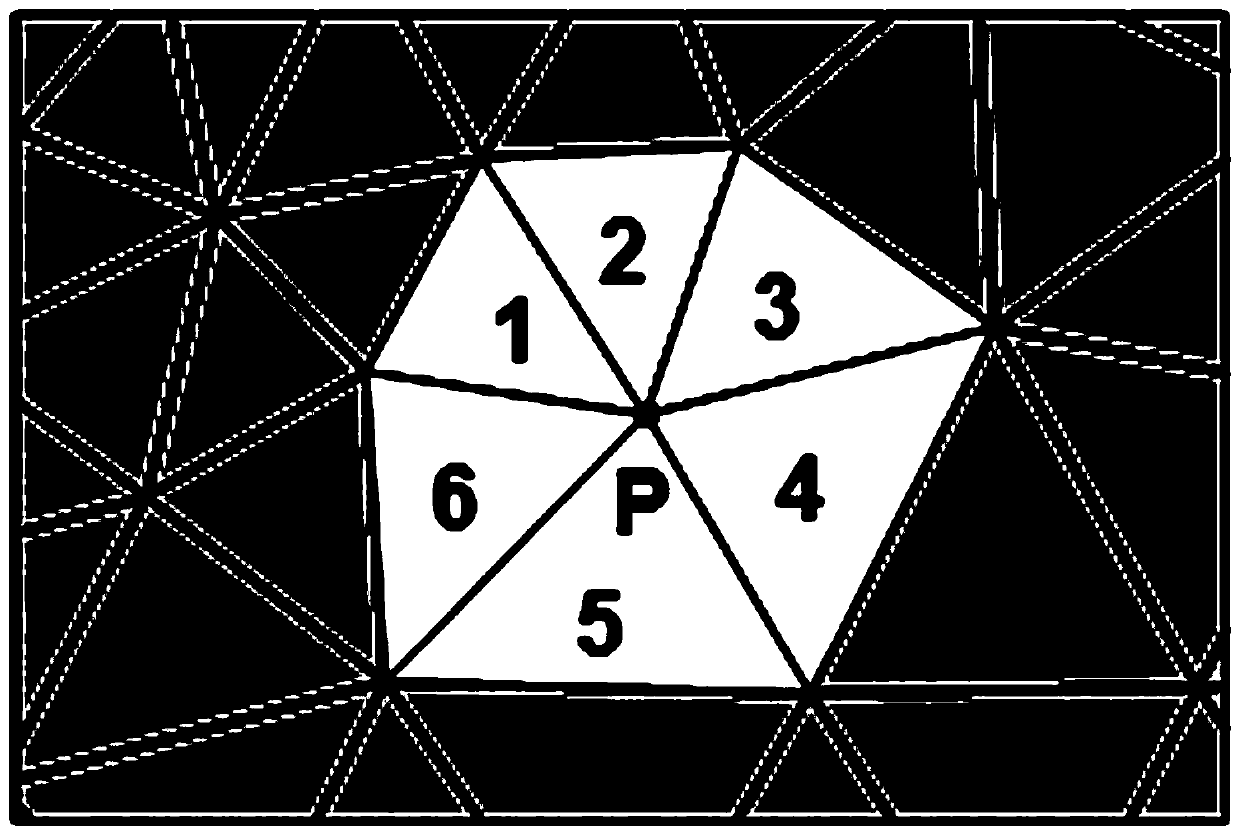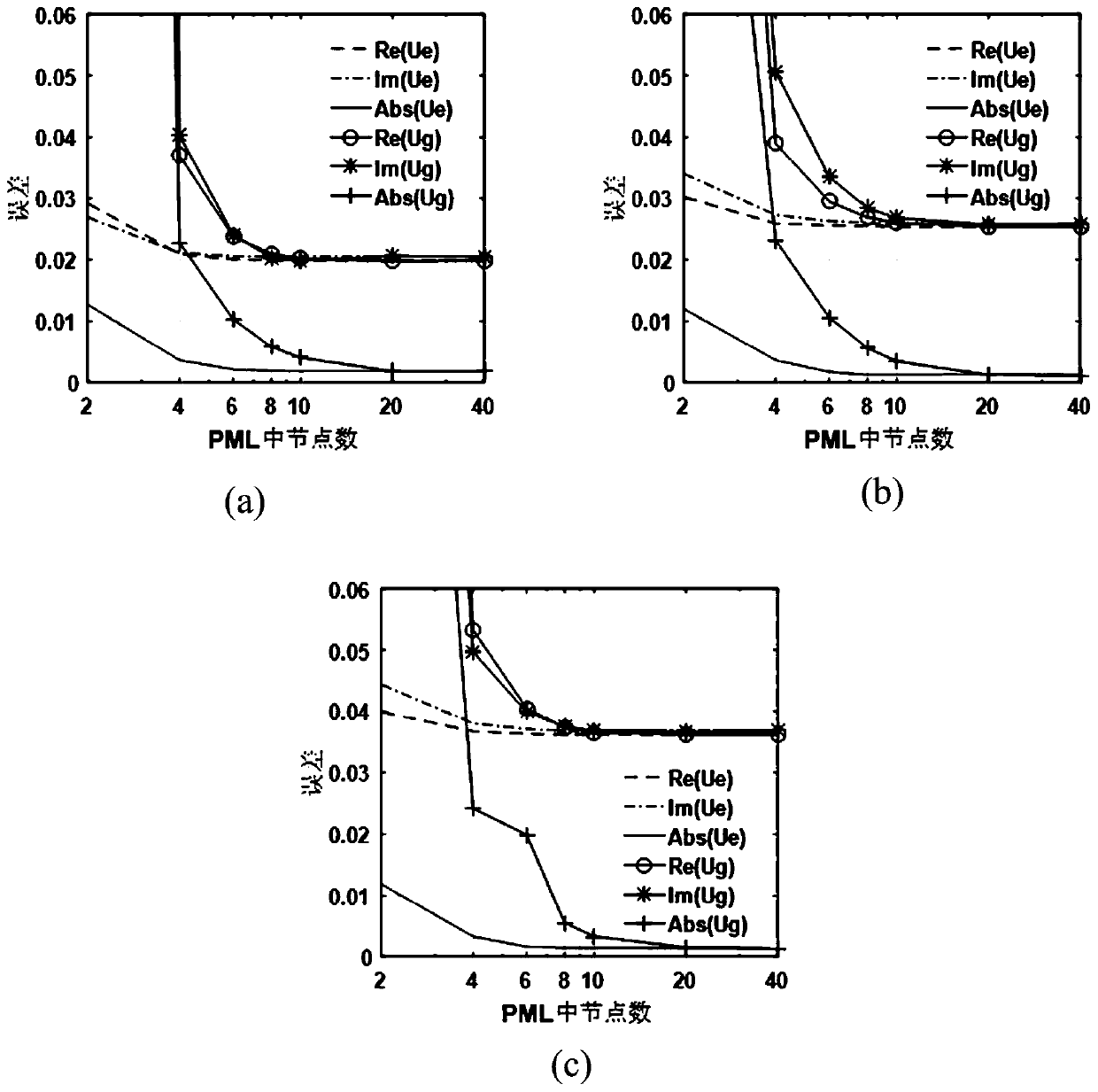Adaptive finite element GPR frequency domain forward modeling method
A finite element, self-adaptive technology, applied in special data processing applications, complex mathematical operations, instruments, etc., can solve the problems of cumbersome and high calculation costs, achieve good absorption effect, reduce the degree of freedom of nodes, and simplify the parameter optimization process Effect
- Summary
- Abstract
- Description
- Claims
- Application Information
AI Technical Summary
Problems solved by technology
Method used
Image
Examples
Embodiment Construction
[0034] Such as figure 1 Shown is the method flow diagram of the inventive method: this adaptive finite element GPR frequency domain forward modeling method provided by the present invention comprises the steps:
[0035] S1. Set the parameters of the forward modeling method, including forward modeling frequency, model parameters and initial grid;
[0036] The initial grid adopts Delaunay triangular grid, and the grid is subdivided to obtain unstructured grid subdivision results;
[0037] S2. Calculate the numerical solution of the current grid according to the parameters set in step S1; specifically, the following steps are used for calculation:
[0038] A. Use the FEFD algorithm to calculate the numerical solution of the grid;
[0039]According to the theory of electromagnetic wave propagation (Taflove & Brodwin, 1975), the propagation of radar waves in a lossy medium follows the Maxwell equations, and the frequency domain representation of the two-dimensional TM wave is:
...
PUM
 Login to View More
Login to View More Abstract
Description
Claims
Application Information
 Login to View More
Login to View More - R&D
- Intellectual Property
- Life Sciences
- Materials
- Tech Scout
- Unparalleled Data Quality
- Higher Quality Content
- 60% Fewer Hallucinations
Browse by: Latest US Patents, China's latest patents, Technical Efficacy Thesaurus, Application Domain, Technology Topic, Popular Technical Reports.
© 2025 PatSnap. All rights reserved.Legal|Privacy policy|Modern Slavery Act Transparency Statement|Sitemap|About US| Contact US: help@patsnap.com



